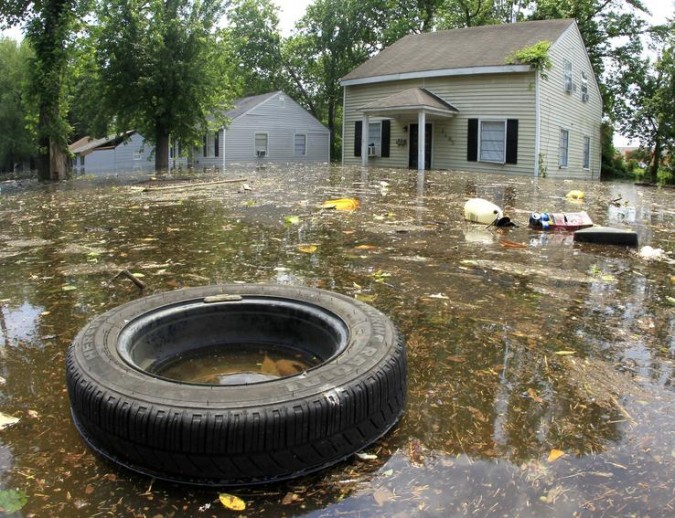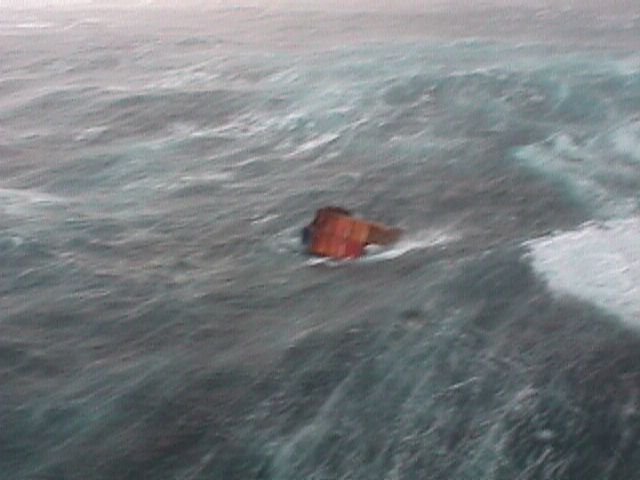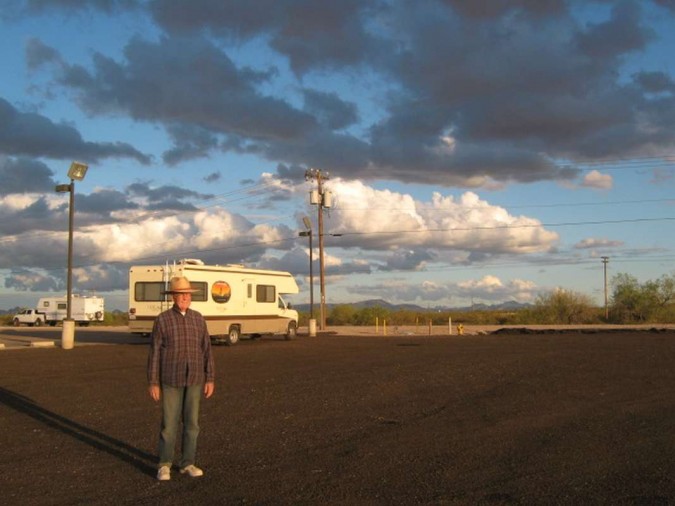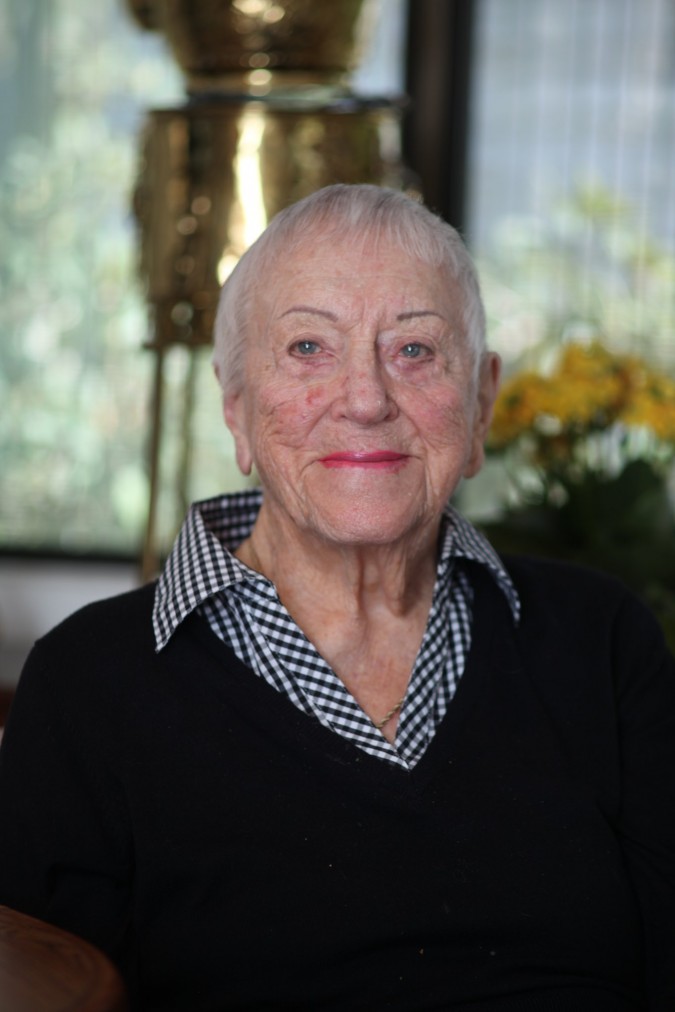Archive for 2011
Back to the stone age
Here’s an off the beaten path article I love the Wall Street Journal newspaper for writing:
Armed With Stone-Tipped Arrows, Hunters Stalk Their Inner Cave Men
According the the article, there are a subset of hunters that are ditching their guns and carbon fiber bows, in favor of bows and stone tipped arrows they make personally.
Here’s a passage from the piece:
“Interest in the stone-age lifestyle has been growing. In recent years, archaeology buffs started arrowhead-making groups in places like Portland, Ore., and Pasadena, Calif. Other die-hards have adopted meat-heavy “paleo” diets, eating like traditional hunter-gatherers.
While there has long been a cult of hunters who use old-style rifles and bows, “bowhunting has picked up pretty tremendously across the country,” says Mike Moore, chief executive of Primitive Archer magazine. The publication’s circulation is up 25% over the past five years, to roughly 30,000, he says.”
I don’t think Bus Conversions Magazine, which covers my hobby of converting a bus to a motorhome, has 30,000 subscribers. I am impressed that so many people are into ‘primitive archery.’ I see it as related to urban homesteading — getting back to nature and how things used to be done.
Flood resistant homes built from ocean shipping containers
The more I dream about becoming a builder of green homes, the more ideas I come up with.
Today’s crazy idea was inspired by the dramatic 2011 Mississippi River floods now happening.
As I’ve disclosed here before, I want to base my green homes, at least to start, on recycled ocean shipping containers. These containers are strong, waterproof and standardized across the planet. Many companies and private individuals already make homes from shipping containers. I have many spins on the concepts that I think make my plans stand out from other plans I’ve seen.
Unaltered containers are pretty water tight. They are so water tight that when they fall off a container ship during a storm, they float for a while — even months is possible. They are a major hazard for other boats and ships, because they are very hard to spot, as they float so that most of the container is submerged, with only about a foot sticking up out of the water. If a boat hits a floating container, that boat can sink from the damage caused by the impact.
My uncle Gerald Warnock is an avid fisherman. On our most recent fishing expedition, last month, I was telling him about my green housing ideas, and he said floating containers are such a marine hazard that there are plans being discussed to install a ‘fuse’ in the side of containers that will disintegrate when immersed in water. Thus, an overboard container will flood and sink once the fuse disintegrates. This will send the cargo to the bottom, but make water travel safer.
I think it would be better to put a satellite beacon in every container, and have the beacon activate when the container is imersed in water. Then the container location could be broadcast on the Internet, and treasure seekers could go pick up the container. Perhaps there could be a bounty sharing treaty set up so the entity salvaging the container would get to keep half of the value and the original owner would get the other half.
People on land spend hours with metal detectors looking for valuables on beaches and elsewhere. I bet that overnight a mini industry would spring up if there were an electronic map overlay website with dots where floating lost shipping containers potentially filled with valuable new products could be found. In fact, I predict that salvagers would compete and the team with the fastest ship would prevail. I don’t know how ships get public data at sea, but there must be a way to publish container location GPS coordinates via a low cost system that can be accessed while at sea. Since the containers are on the move, one would need up to the minute satellite beacon information to justify spending fuel money to travel to a location where a container is supposed to be. I advocate publishing the contents and declared value of the container’s contents along with the coordinates, so salvagers will be able to gauge whether it’s worth it to make the trip. Environmental groups should like my plan, as sunken containers probably aren’t a good thing.
That’s not my idea I intended to write up in this post… it’s just another one of my ideas I’ve wanted to write up for a while now.
My idea I intended to write in this post is to use the shipping container door as the home door, leaving the weather stripping intact. Yes, I would dress up the door and insulate it, to increase its asthetic appeal. But if I leave the original door, then the home can stay watertight if I make the other openings similarly watertight.
Thus, the windows would have to have shutters that could be closed, and the shutters would need to be water tight like the door. The roof hatch also would need to be water tight, and any openings for plumbing lines, electrical lines and the like also would need to be watertight.
Such watertight products already exist for the maritime industry. The roof hatch on a sailboat is reasonably watertight, and while these cost more than a house skylight, they’re not that much more costly. I doubt a sailboat hatch could withstand water pressure if the container were many feet underwater. So, to combat that threat, I could use a submarine hatch! That should handle whatever pressure develops… Seriously though, I doubt flooded areas encounter flood depths such that marine grade trap doors and hatches would not keep most or all of the water out.
The resident of a green home built as I describe here could weather a flood by just closing the door, the windows and the roof hatch. Even if the home were entirely underwater, it would remain dry inside. I wouldn’t recommend trying to live inside, as the air would run out in short order, of course. But when news of an impending flood is received, it would take just minutes to close up the house and depart for higher ground.
There will be tremendous societal benefit to avoiding the billions of dollars in flood damage that results from our current non-waterproof housing.
Shipping container homes without waterproof doors, windows and roof hatches are already very resistant to earthquakes and tornados. Adding waterproofing is not really much extra work, and I would consider making it standard for all homes in flood prone areas, and an available option for all homes, since flooding is likely to get worse over the next few centuries, and I predict any green homes I make from shipping containers will endure for at least a century. These would not be throwaway mobile homes with a cheap feel from day one. These would be rock solid, nearly indestructible homes to pass down from generation to generation.
When I was touring NIMBY a while back to look for space to build a container home, I saw shipping containers from decades ago, from before their design was standardized by the ISO. These things don’t fall apart. I think a properly designed container home clad in suitable exterior siding like brick or granite could last indefinitely — certainly as long as the centuries old housing one sees in parts of Amsterdam and Paris.
EFactor – The largest network for entrepreneurs

I had never heard of EFactor until recently. It’s the largest [social] network for entrepreneurs in the world, according to the EFactor website.
I learned about EFactor from one of its cofounders, Marion Freijsen.
We were both final round judges for the Made for China Entrepreneurial Pitch Competition presented by Berkeley Chinese Students and Scholars Association. This event took place April 27, 2011 at International House in Berkeley, California. EFactor wrote a nice story about the pitch competition.
Freijsen invited me to see their extremely cool office at the cable car turnaround on Market Street in San Francisco, California. You can see Freijsen in the picture above. She’s the first person in the upper left. I’m the third person in the top row, from the left.
The EFactor office is in the Flood Building, a grand and important 100+ year old office building in San Francisco. What makes their office cool though is that it’s circular, as it’s in the front round part of the building you see when you’re standing at the cable car turntable and look up. I have seen this facade hundreds of times, but never before have I been inside one of those round offices.
Sadly, I’m still mostly unfamiliar with EFactor, as I devoted too much of my time with Freijsen talking her ears off about my plans to improve the human condition with my efficient housing, energy, food and finance ideas. Next time I see her, I’ll insist she do all the talking.
Novella Carpenter’s getting the zoning laws changed in Oakland, California
My here Novella Carpenter is back in the news today. If you recall, I wrote about her troubles with the Oakland, California authorities on April 1, 2011. They were asking her to buy a $2,500 permit to sell vegetables she grew on her lot in a gritty part of Oakland.
She raised the money and got the permit, as I predicted she would.
What I didn’t predict is that she would continue further to try to get the laws changed in her city so that a permit would not be required. I am proud of Carpenter, and frankly inspired by her.
Oakland urban farming prompts plan to redo rules
I wonder if my life’s work is going to be changing zoning laws worldwide to allow people to live in small, efficient homes where ones food is grown on site, at a cost so low a mortgage won’t be required. That Carpenter is turning her modest fame into being able to be the catylist for getting the laws changed in Oakland makes me think more than ever that I will be able to get laws changed as well. I have years of work ahead of me to even reach the stage Carpenter is at today, but today’s zoning laws are out of touch with the current reality of the planet, where we are running out of resources at an alarming rate, and the current western lifestyle is in grave danger over the coming centuries. A century will pass quickly, and it’s not fair to squander the earth’s resources in a blink of time like we have been doing for the last century.
We should be saving petroleum so that it lasts for thousands of years, since I presume there are some products that really do need genuine petroleum. To waste it on things that don’t ‘need’ it, like heating our homes, should soon become criminal, say in 10 years or 20 years time. Most every home on the planet can be 100% solar heated. Yes, perhaps the house would have to be much smaller to free up the money to pay for the solar heating infrastructure, but so what? In the US, we lived in houses half the current size just a few decades ago, and nobody thought anything of it at the time I suspect. Why not go back to that size house but ditch the entire heating bill forever? Is that not a great trade off?
13th Annual UC Berkeley Business Plan Competition results
For posterity, here’s the email that University of California at Berkeley sent out notifying recipients about the winners of the 2011 Berkeley Business Plan Competition.
The finals were held at the Berkeley Entrepreneurs Forum today, April 28, 2011.
Since the online version of the email probably won’t stay online forever, I made a screen capture of the email, below.
I’m selling my RTS bus conversion!
I can’t believe I’m writing this, but I’ve decided to sell my RTS bus conversion. My heart just isn’t in it anymore…
Thoughts on the tragic death of Michele Dufault, a Yale University student killed when her hair got caught in a lathe
My heart goes out to the family of Michele Dufault, an undergraduate student of astronomy and physics at Yale University. Dufault died April 12, 2011 when her hair got caught in the powerful lathe she was using alone late at night in a Yale workshop.
I studied astronomy and physics at UCLA, so the story of Dufault’s death particularly moved me.
“Connecticut’s chief medical examiner ruled the death an accident, citing the cause as asphyxia due to neck compression” read the New York Times newspaper article where I learned of this tragic accident. The article didn’t say so, but something tells me the machine pulled her head into the machine and the rotation of the machine stopped, putting tremendous force on her neck, killing her. Even if she could reach her cell phone, she would likely haven’t been able to say a word, and the pain must have been overwhelming, with the still energized motor straining to continue rotating the work piece.
I shiver even thinking about how awful this death was, and how traumatized the students who discovered her body must be.
I write this post to warn people to be really careful working in the shop. Those with long hair should probably wear a shower cap to completely cover their hair.
When I grind metal, I wear ear muffs, leather work gloves, a respirator mask and a full face shield. I wear a full face shield when I use a drill or cordless screw driver, on the theory that even screws could break apart and hit me in the eye.
I am pleased that TechShop, the membership workshop I’m a member of, has installed a SawStop table saw that will stop the blade nearly instantly if a person touches it. This safety mechanism should be installed on all dangerous power tools, but in particular mills, drills and lathes that have exceedingly high torque that can literally squeeze you to death, even if they don’t cut you.
I don’t know if it’s true, but the SawStop website says there are 10 table saw amputations per day! Here’s a video on the SawStop website describing their safer saw.
I hope that schools don’t shut down their workshops because a beautiful 22 year old student lost her life in an accident. It’s important that students learn how to build things, for the world can’t run on software and ideas alone. In fact, I strongly believe shop class and home economics should be taught to every student that attends school.
I predict that Dufault’s tragic accident will spur dramatic safety improvements in school workshops, for her story is so tragic and her life was so full of promise. Perhaps her friends and family may take comfort that Dufault’s ‘life work’ may turn out to be saving countless others from workshop injuries by shining a bright light on machine safety.
SawStop has patented their technology, but perhaps it can be licensed to makers of tools SawStop doesn’t yet make, so that all the dangerous moving mechanisms of power tools can be outfitted to stop when touched by a person.
Again, my heart goes out to Dufault’s family, friends and colleagues.
Tioga George tells his story on his travel blog he writes from his satellite connected RV
I frequently read the blog by ‘Tioga George.’
Tioga George is a pseudonym made up from the brand name of the recreational vehicle he lives in full time concatenated to his real first name.
For 8 years he’s been traveling full time in his Class C RV he calls ‘Ms. Tioga.’ He writes his blog almost daily, connecting to the Internet via Hughes geosynchronous satellites using his MotoSat brand Internet two-way dish, like the one I had on my my MCI bus conversion I sold in January, 2011. Note I removed the MotoSat dish before I sold the MCI so that I can recycle it on my RTS bus conversion I’m in the middle of building.
George makes a substantial part of his income from Google AdSense advertisements that appear alongside his blog posts about his travels. I admire how he has turned his passion for full time travel into a dependable income. It’s also been a dependable source of new friends and new adventures, as he often meets his readers in person after they’ve gotten to know him via his blog posts.
On April 11, 2011, George wrote an entry that illunimated his life more than any other post he’s written. I feel that I understand him better having read this post. The post was so moving that I’ve decided to share it with you here by copying it verbatim. I have also linked to it as well. If you read this account, please click on the link so George will get the traffic as well. I chose to copy the text so that more of my readers read it, and to make sure that I have it here for decades to come, in the event George’s blog should go offline. I have emailed George asking for permission to reprint his post, but he writes that he’s terribly backed up on replying to emails. I will delete his text below if he later replies and for some reason does not grant publication permission. I consider George to be a friend, and we’ve exchanged occasional emails for years, so I’m pretty sure he will welcome my republishing his moving remarks.
Monday, April 11, 2011:
A couple of mornings ago I was lying in bed and thinking about 1995. That was the year that I went to live in my son David’s home. I was dead broke, and desperately in need of help. David’s home was tiny in 1995. He had foster kids living with him and no bedroom for me. So, he gave me some space on the floor of his dining room. My son David helped me several times since 1995. David let me use his home address for my home address. When I became an RVer, David received my mail for seven years while I was on the road. David let me stay with him whenever I returned to California. He never refused to help me.
It took me almost a year after moving in with David in 1995 to get on my financial feet once again. I got a job in a cabinet shop as an apprentice cabinet maker in 1996. At 58 years old, I was an apprentice once more. I rented a room in a home a couple of blocks from the cabinet shop and lived there for five years. During this time I lived like a monk, saving all the money that I could. By the time that I had overcome cancer in 2003, there was enough money to buy and equip MsTioga.
Yesterday I wrote to you that on March 28, 1984, my life fell apart. Actually, looking back at that date, this was the pinnacle of my life to that point. My wife and I owned two fast food restaurants. I managed one, she the other. We owned a lovely home in Walnut Creek, California. But I had a screw loose someplace, and that screw caused me great difficulty in relationships with others. On the morning of March 28th, some kids went by my home on skateboards knocking over garbage cans as they went down the street. I took after them on my bicycle, wearing only my pajamas! When I caught up with these kids, my bike’s front wheel hit a sprinkler head which leaned over the sidewalk. I somersaulted over the handle bar and landed in the street. I had broken my hip and wrist!
Everything went downhill after that accident. My wife divorced me several months later. And I went into a funk that lasted ten years. Wow! Because I did not attend to my restaurant business properly, the business began to lose money. I was forced to sell first one restaurant, and then a few years later the second was sold. I got a job selling AutoCAD software and did really well for about two years. But during the recession of 1991, the company I worked for folded. I remained unemployed from 1992 to 1996.
I wanted to share this part of my life with you to put into perspective what my son David’s support meant to me. And why David’s passing has impacted my life so very much.
George’s son David committed suicide last year, and George remains devastated.
I am sorry for his loss.
George, if you’re reading this, I’m sorry for your tragic loss. Thank you for sharing the story that so effectively explains the man you have become. I’m sure Dave and your living son are very proud of you.
How to get a real education, by Scott Adams, the creator of Dilbert
How to Get a Real Education by Dilbert cartoon creator Scott Adams advocates teaching entrepreneurship to most college students.
I saw Adams speak at UC Berkeley years ago, and he packed the Anderson Auditorium with more people than I’ve ever seen there before. Scott Adams is a great speaker, and he had some entertaining stories, such as how he got to be an engineer at Pacific Bell. It turned out Pacific Bell had a budget for a certain number of engineers, but they would lose that budget if they didn’t have all the spots filled. So, to avoid losing the budgeted funds, they promoted Adams to ‘Engineer’ even though he was not trained or schooled as an engineer.
Adams also told the story of how he became a big time cartoonist. He sent samples of his work to many publishers, but didn’t hear from anyone who wanted to sign him until a year later, when United Media, a company he wasn’t familiar with by memory, called him and said they had finally reviewed his submission and wanted to offer him a contract. He said he actually asked them to list some of the other comics they published to familiarize him with who this company was. The response was: we syndicate Peanuts and Garfield. Adams first contract was with the largest and best know cartoon syndication company in the United States.
How to Get a Real Education, published April 9, 2011 in The Wall Street Journal, is worth reading, and I recommend it very much. One of the stories he tells is how he persuaded college administrators to allow him and his friends to take over running the dorm where he lived. They were successful, so he got a free room to live in and got paid. When I read this account, it made me think of my plan to put elementary, middle school and high school students to work staffing the school lunch programs at their schools, which I wrote about here on April 9, 2011.
My grandmother Elsie Battaglia joined FaceBook.com today, at age 99
My grandmother Elsie Battaglia joined FaceBook today. She is 99 years old. I helped her with the signup process, but she pushed the buttons to create the account by herself. We uploaded about half of the pictures in her physical photo albums — some 1,300 pictures.
FaceBook is currently the most popular so-called ‘social network’ in the United States, and perhaps the world.
I decided to photograph grandma today for her FaceBook profile picture. She applied her own lipstick and I set up my studio light I had brought with me. I used my Canon 5D Mark II camera with the 135mm soft focus portrait lens set halfway between 0 and 1. I directed her poses like I was photographing a young fashion model, and the above picture is the result. I am very happy with the way it turned out, and I think she looks fantastic, especially since she isn’t wearing makeup other than lipstick, and the picture is not retouched.













